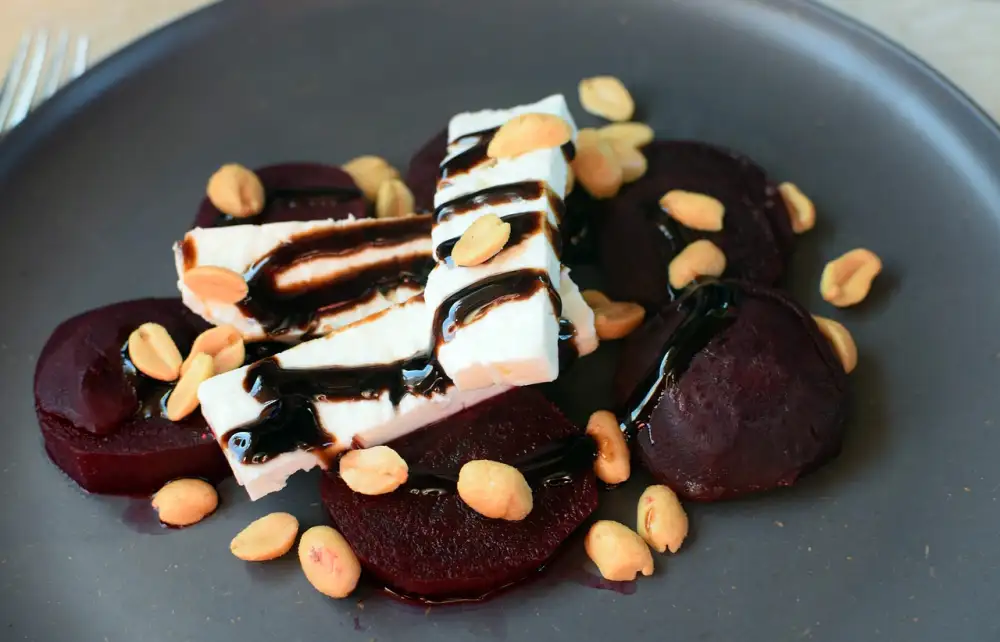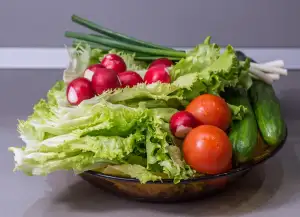Roasting Beets: A Step-by-Step Guide to Unlock the Delicious Potential of this Root Vegetable

Roasting beets is a simple yet transformative cooking method that brings out the natural sweetness and earthy flavors of this root vegetable. Whether you're a beet lover or someone who has never tried them before, roasting beets will surely make you fall in love with their delicious potential. The process involves baking the beets in the oven until they become tender and caramelized, resulting in a rich and flavorful dish that can be enjoyed on its own or incorporated into various recipes. So, let's dive into the world of roasting beets and unlock their culinary magic!
Preparing the Beets
Before you can roast beets, it's important to properly prepare them. Start by washing the beets thoroughly under cold running water to remove any dirt or debris. Trim off the tops and bottoms of the beets, leaving about an inch of stem intact. This will help prevent the beets from bleeding too much during roasting.
Next, peel the beets using a vegetable peeler or a sharp knife. The skin of the beet is tough and can become bitter when roasted, so it's best to remove it. If you're finding it difficult to peel the beets, you can also roast them with their skins on and peel them after they're cooked.
Once peeled, cut the beets into uniform pieces to ensure even cooking. You can slice them into rounds, dice them into cubes, or leave them whole if they are small in size. Remember that smaller pieces will cook faster than larger ones, so adjust your cooking time accordingly.
By taking these steps to prepare your beets before roasting, you'll set yourself up for success in unlocking their delicious potential. Now that your beets are ready, it's time to move on to seasoning them for maximum flavor!
Seasoning the Beets
Once your beets are prepared, it's time to add some flavor. Seasoning is essential to enhance the natural sweetness of the beets and create a delicious depth of flavor. Here are a few seasoning options to consider:
1. Olive oil and salt: Drizzle the beets with olive oil and sprinkle them with salt. This simple combination brings out the earthy flavors of the beets.
2. Balsamic vinegar: For a tangy twist, try adding a splash of balsamic vinegar to your beets before roasting. The acidity of the vinegar complements the sweetness of the beets beautifully.
3. Herbs and spices: Experiment with different herbs and spices to elevate the taste of your roasted beets. Fresh thyme, rosemary, or dill can add an aromatic touch, while ground cumin or paprika can bring a hint of warmth.
4. Citrus zest: Grate some citrus zest, such as lemon or orange, over the seasoned beets before roasting. The bright citrus flavors will balance out the earthiness and add a refreshing element.
Remember to toss the beets well in their seasoning so that every piece is coated evenly. This will ensure that each bite is bursting with flavor when they come out of the oven.
Roasting the Beets
1. Preheat the oven to 400°F (200°C). Place the prepared beets on a baking sheet lined with parchment paper or aluminum foil.
2. Drizzle the beets with olive oil, making sure they are evenly coated. Sprinkle with salt and pepper to taste. Toss gently to ensure all sides are seasoned.
3. For added flavor, you can also add herbs like thyme or rosemary, or spices like cumin or paprika. This will give your roasted beets a unique twist.
4. Place the baking sheet in the preheated oven and roast for about 45-60 minutes, depending on the size of the beets. Flip them halfway through cooking to ensure even browning.
5. The beets are done when they are tender and easily pierced with a fork. You can test their doneness by inserting a knife into the thickest part of a beet – it should go in smoothly.
6. Once roasted, remove the baking sheet from the oven and let the beets cool for a few minutes before handling.
Remember: roasting time may vary depending on the size and freshness of your beets, so keep an eye on them to avoid overcooking.
Checking for Doneness
Checking for Doneness: Once the beets have been roasting for about 45 minutes, it's time to check for doneness. Gently insert a fork or skewer into the thickest part of the largest beet. If it goes in easily and the beet feels tender, then they are done. The skin should also be wrinkled and slightly charred. If the beets still feel firm, continue roasting for another 10-15 minutes and check again. Be careful not to overcook them as they can become mushy. Remember that cooking times may vary depending on the size of the beets, so keep an eye on them towards the end of the cooking process.
Cooling and Peeling the Beets
Once the beets are roasted to perfection, it's time to cool them down and remove their skins. Allow the roasted beets to cool for about 10 minutes, or until they are safe to handle. You can speed up the cooling process by placing them under cold running water.
Next, gently rub the skins of the beets with your fingers or a paper towel. The skins should easily slip off, revealing the vibrant and tender flesh beneath. If there are any stubborn spots, use a small paring knife to carefully peel them away.
Be careful not to burn yourself while peeling the beets, as they will still retain some heat from roasting. It's also important to note that beet juice can stain your hands and countertops, so you may want to wear gloves or use a cutting board that is easy to clean.
Once peeled, you can slice or dice the roasted beets according to your preference. They are now ready to be used in various dishes or enjoyed on their own. The earthy sweetness of roasted beets makes them a versatile ingredient that pairs well with both savory and sweet flavors.
Remember that roasted beets can be stored in an airtight container in the refrigerator for up to five days. This allows you to prepare them ahead of time and incorporate them into your meals throughout the week.
Now that you know how to cool and peel roasted beets, you have unlocked a world of culinary possibilities. Experiment with different recipes and enjoy this nutritious root vegetable in all its delicious glory!
Serving Suggestions for Roasted Beets
1. Salad: Toss roasted beets with mixed greens, crumbled goat cheese, and toasted walnuts. Drizzle with a balsamic vinaigrette for a refreshing and nutritious salad.
2. Side dish: Serve roasted beets as a side dish alongside grilled or roasted meats. Their earthy sweetness pairs well with savory flavors.
3. Appetizer: Create a vibrant beet hummus by blending roasted beets with chickpeas, garlic, lemon juice, and tahini. Serve with pita chips or fresh vegetables.
4. Sandwich topping: Slice roasted beets and use them as a flavorful addition to sandwiches or wraps. They add a unique texture and taste to any lunchtime creation.
5. Pasta sauce: Puree roasted beets with garlic, olive oil, and vegetable broth to make a colorful pasta sauce. Toss it with cooked pasta for an eye-catching and delicious meal.
6. Pickled beets: After roasting, slice the beets and pickle them in vinegar, sugar, and spices like cloves or cinnamon. These tangy pickled beets make a great accompaniment to charcuterie boards or salads.
7. Roasted beet dip: Blend roasted beets with Greek yogurt, garlic, lemon juice, and herbs like dill or parsley for a creamy dip that pairs well with crackers or crudites.
Get creative with your serving ideas! The versatility of roasted beets allows you to experiment in the kitchen and discover new ways to enjoy this root vegetable's rich flavors.
In conclusion, roasting beets is a simple yet transformative cooking method that brings out the natural sweetness and earthy flavors of this root vegetable. By following the step-by-step guide, you can unlock the delicious potential of beets and create a versatile ingredient for various dishes.
Here are some final tips to enhance your roasted beets:
1. Experiment with different seasonings like balsamic vinegar, honey, or herbs to add depth to the flavor profile.
2. Don't overcrowd the baking sheet to ensure even roasting and caramelization.
3. Use gloves or tongs when handling beets to avoid staining your hands.
4. Be patient during the cooling process as it allows the beets to firm up and become easier to peel.
5. Store any leftover roasted beets in an airtight container in the refrigerator for up to 5 days.
Roasted beets can be enjoyed in various ways - as a side dish, tossed in salads, pureed into soups, or even incorporated into desserts. The possibilities are endless! So go ahead and embrace the vibrant colors and flavors of roasted beets in your culinary adventures. Happy cooking!
Published: 09. 12. 2023
Category: Food



